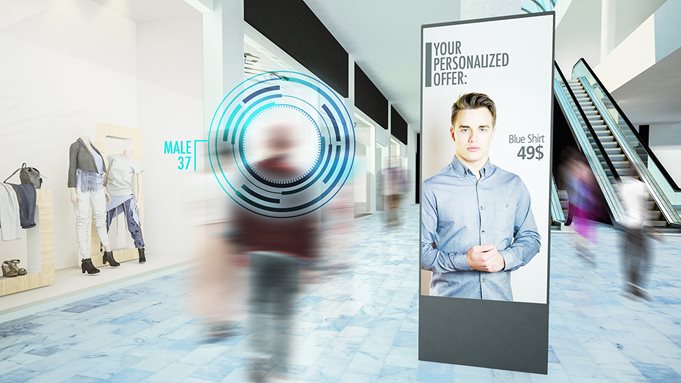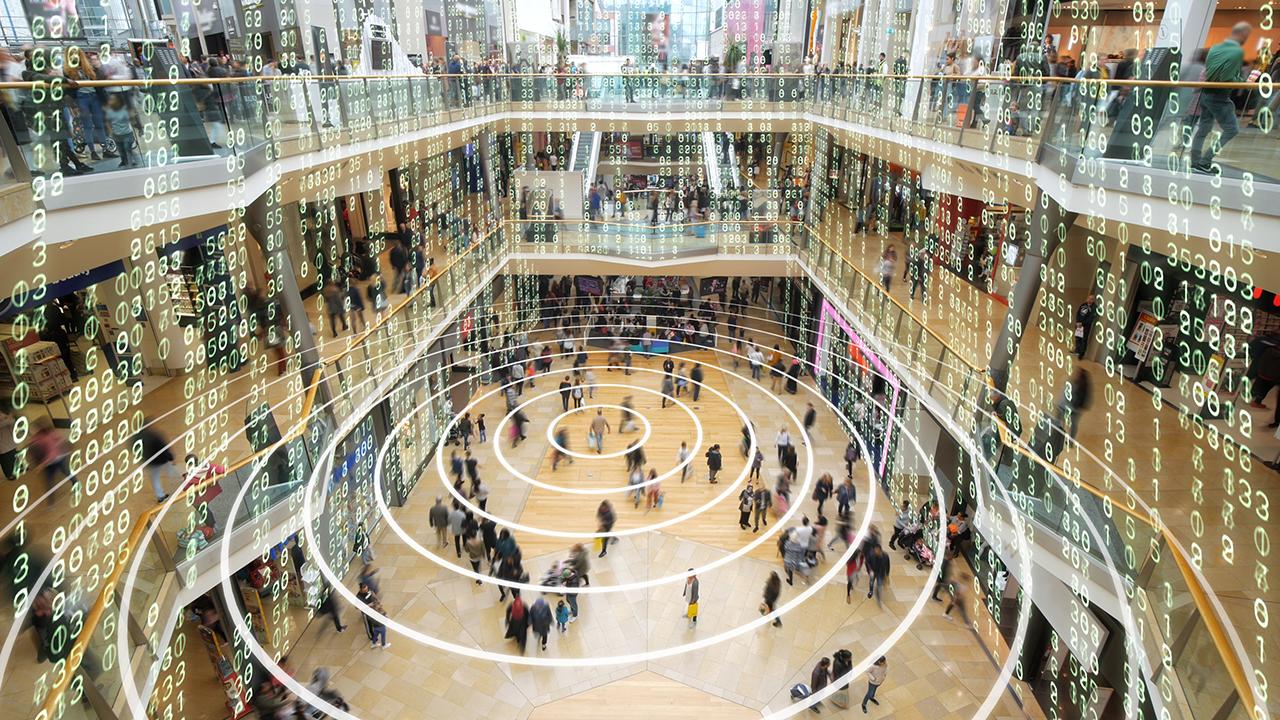当今的零售购物体验是以数据为支撑的定制和体验。随着IoT 网络、连通性和人工智能的进步,零售商可以通过采用更具创新性、以客户为中心的技术来扩大影响力。
此外,5G 部署正在进行中,这意味着机会将随着更高的带宽和更快的吞吐量而继续扩大。Digi 是推出高性能下一代无线通信解决方案的主要解决方案供应商之一,例如
Digi EX50 5G 蜂窝路由器 配备 Wi-Fi 6、扩展温度范围以及用于管理、可靠性和安全性的集成软件。
在本篇文章中,我们将探讨零售业的发展前景。
零售商正在个性化购物体验

最近 微软研究报告 发现 "消费者愿意与品牌共享数据--63% 的美国消费者表示,他们愿意与提供优质体验的公司分享更多信息"。
这意味着企业有机会实现销售过程的个性化。现在有了大量的数据,企业可以更好地洞察客户或潜在客户对哪些产品感兴趣。
再看一下数据,"91% 的消费者更愿意在那些能够识别、记住并提供相关优惠和推荐的品牌购物"。顾客喜欢感觉购物体验是根据他们的需求量身定制的。十个人中有九个人喜欢他们可能感兴趣的产品的相关建议,这并不奇怪。
另一个有趣的数据是,根据 研究 来自 SDP 集团的数据显示,"37% 的购物者在首次访问时点击了个性化推荐,而没有点击推荐的购物者中只有 19%的人再次访问"。
量身定制的购物体验既有意义又个性化。另一方面,它是数据驱动的。因此,LTE 网络、人工智能和 5G 的出现将对零售商部署个性化购物应用的能力产生爆炸性影响。
人工智能将如何影响零售业?

个性化推荐在理论上听起来很不错,但要从数以 TB 计的数据中筛选出个人偏好却并非易事。人工智能是推动个性化购物体验革命的强大计算能力。
人工智能在很大程度上依赖于算法密集型机器学习(ML)来取得成果。人工智能和机器学习都在快速发展并取得成果。根据 CB Insights"从 13 年第一季度到 18 年第三季度,零售人工智能初创企业通过 374 笔交易筹集了 18 亿美元"。
让我们来看看人工智能和机器学习对零售业产生影响的一些最令人兴奋的举措。
1.动态价格调整
人工智能最擅长的一件事就是整理海量数据,发现趋势并预测结果。人类擅长创建计算模型和使用计算工具,而计算机则可以加速这些计算,并利用预测分析来实现更快、更自动化的价格调整。
人工智能可以快速分析历史销售数据,并将以往促销活动的成功率和类似产品类别的销售数据考虑在内。然后,它可以利用所有这些数据来预测产品的最佳价位。这是一个动态过程,随着新信息的出现,价格可以不断调整。
价格优化也不局限于实体产品。酒店业也能从中受益。例如,Airbnb 会在需求旺盛时自动上调价格,而航空业则因其神秘的人工智能定价方案而声名狼藉。
2.准时生产
正如我们在博文 "IoT 和供应链管理"中所述,供应链和制造业也在利用前沿技术:数字化革命"中所述。
准时制(JIT)制造是一种优化和改进流程的战略,它能极大地影响底线--为即时预期的需求而不是库存制造产品。库存有两个弊端:一是需要入库,二是如果库存从未售出,就会造成损失。
就其本质而言,JIT 生产会导致较小的生产量。如果产品设计需要更改或被证明有缺陷,受影响的只是小批量产品。小批量生产还能降低成本,从而腾出资金用于其他更具生产力的用途。
挑战在于预测生产的最佳时机。生产太多,现在缩小的仓库可能无法容纳产品。生产太少,零售商可能会缺货。
人工智能可以分析数十个数据点,从而对何时开始生产做出最佳预测。由于其复杂性和需要快速处理的数据量,需求预测是超级计算机的最佳用途。有了机器学习这个好帮手,人工智能可以从错误中吸取教训,从而使其 JIT 生产预测随着时间的推移而不断改进。
3.无收银台零售商
亚马逊最初在西雅图只开了一家店,这也是它的第一家店:一家没有收银员的便利店,店里的摄像头比购物者还多。顾客可以随时离开,无需排队结账。
第一家商店只是一个概念,无论摄像头有多好,都无法确定其功能有多好。不过,试用期已经结束,效果还不错。事实上,亚马逊已经宣布,他们希望从加利福尼亚州到康涅狄格州,从沿海到内陆,建立数千家这样的商店。
这些商店背后的技术是头版专题的绝佳素材。然而,真正让零售商兴奋的是无收银台商店所提供的数据宝库。忠诚卡已经帮助零售商跟踪顾客,但它们是可有可无的。
在无收银台商店,每个进入商店的人都能通过一个应用程序被识别,每次购买都会被编目。这就是大量的数据。将其与最先进的人工智能系统相结合,个性化营销和 JIT 生产就会变得更加容易。
4.虚拟迎宾员和助理
如果您访问 Digi 总部,就能体验到这一领域的未来发展。虚拟迎宾员,如nuMedia Innovations公司的 PRSONAS 产品 "安琪",可以接待零售店或娱乐体验场所的访客,并提供个性化指导。
我们预测,这将是一个日益增长的趋势,因为零售业主希望在人员无法到岗的时间和地点提供始终如一、以客户为中心的体验。
5G 将如何影响零售业?

零售业正在发生的变革充满活力,令人兴奋,而且仍在继续。从步行购物到网上购物体验的转变带来了挑战,但同时也蕴含着许多机遇。未来,5G 将进一步帮助零售商为顾客带来购物体验。
5G 的全面部署正在进行中,需要对支持下一代网络模式的设备进行测试和部署,但这一切肯定会到来。我们将看到更多的零售IoT 应用,这些应用将针对更大的带宽和更快的吞吐量进行优化。根据Forrester Research 的一篇文章,这将包括
- 支持 5G 的增强现实、混合现实和虚拟现实应用,包括销售支持。
- 支持 5G 的IoT 服务,为供应链的重大改进提供支持。
- 以 "大数据 "客户洞察力为支撑的 5G 零售技术。
下一代零售业的基础设施
人工智能、机器学习和 5G 必将在未来十年改变零售业的面貌。这一切背后的关键要求将是强大的骨干网络吞吐量和可靠性,以确保优质体验和关键的正常运行时间,同时支持消费者对连接性的期望--这种骨干网络既能提供您当前所需的性能,又能帮助您的业务面向 5G 未来。
如今,蜂窝 LTE 连接通过两种方式提供关键的数据吞吐量和正常运行时间支持:
- 备用蜂窝连接,可使网络连接快速、自动地从主要有线连接 "故障切换 "到蜂窝连接。
- 具有双 SIM 卡功能的主蜂窝网络连接,可确保在一个蜂窝网络运营商的连接出现问题时,另一个运营商会立即启动。
如今,蜂窝网络计划的价格更具吸引力,而且需要高可靠性连接的更多互动体验正在发生巨大变化,因此我们看到了以蜂窝网络为主的趋势,但这两种情况都能提供满足当今和未来苛刻的零售、信息亭和数字标牌需求所需的关键服务和正常运行时间。
Digi 支持您所有的网络连接和迁移规划,无论您是需要现在就从 2G 或 3G 升级到 LTE,还是希望确保您的 LTE 基础设施为 5G 网络做好准备。请联系我们了解详情。